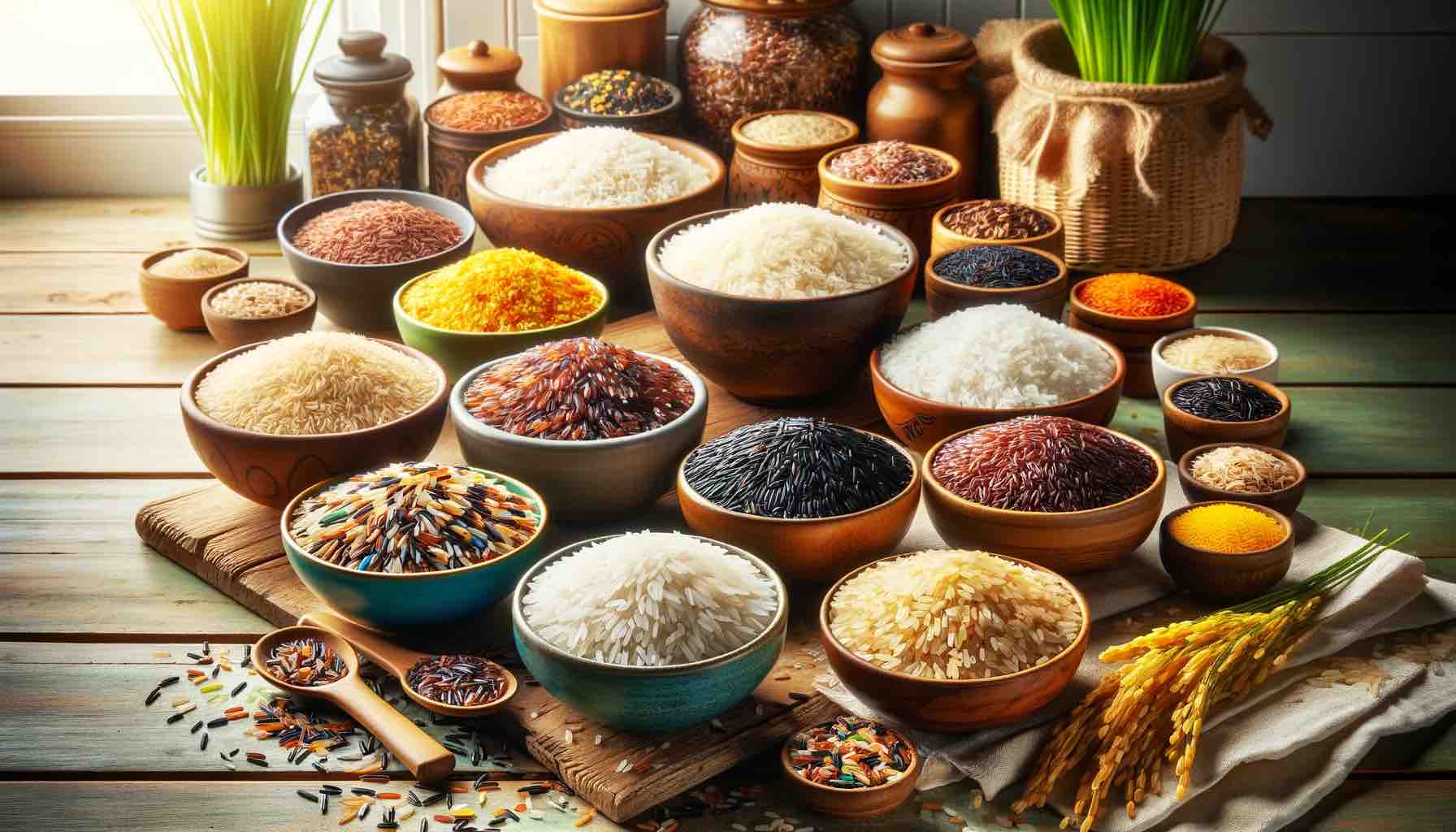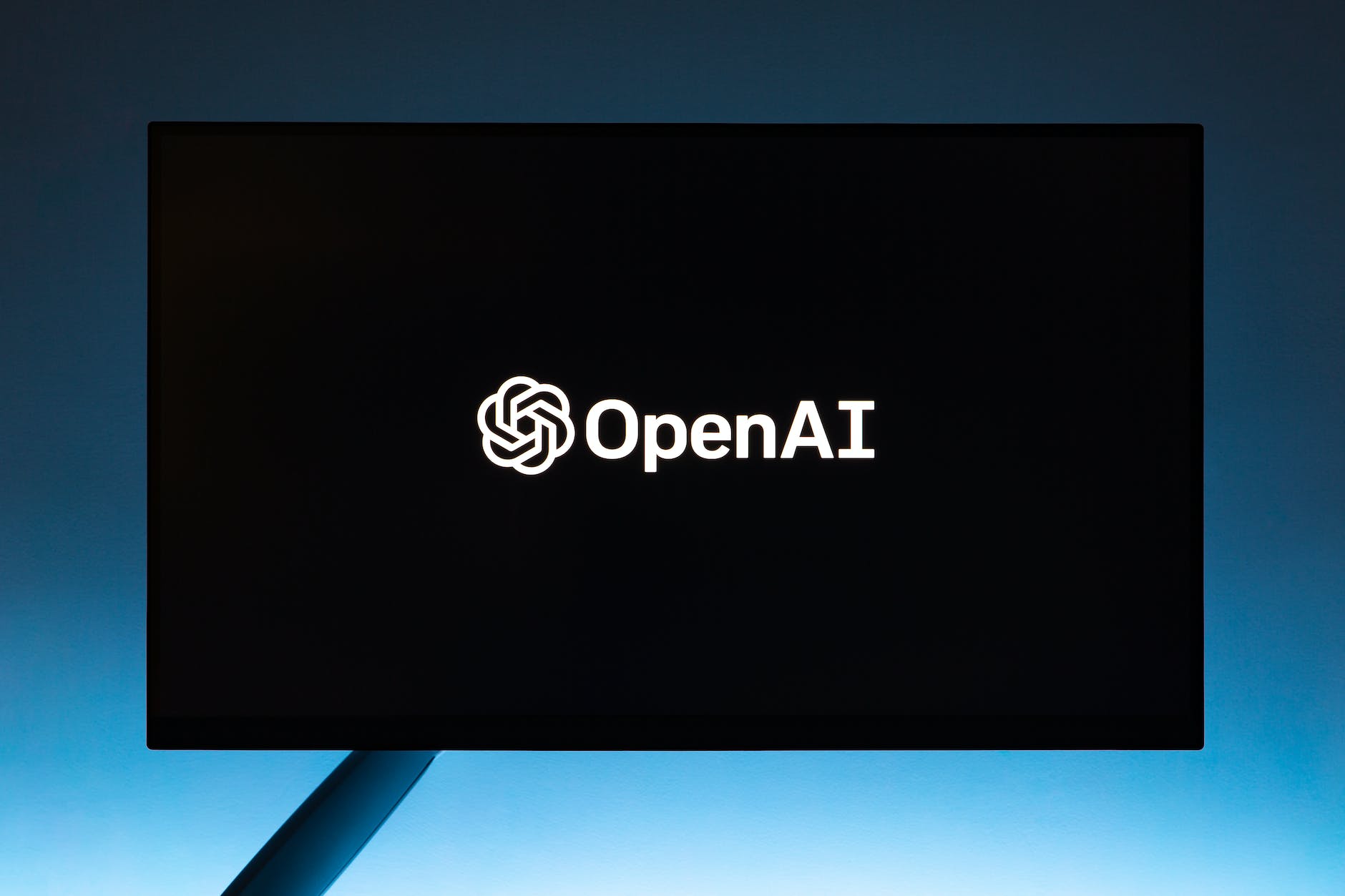
Introduction
Rice: A Global Staple with a Hidden Story
Imagine a world where a single grain shapes cultures, fuels millions and holds secrets that could impact your health in ways you never thought possible. This isn’t a fantasy; it’s the world we live in, where rice is not just a staple food but a global phenomenon.
Rice is more than just a side dish on your plate; it’s a key player in the nutritional story of nearly half the world’s population. But there’s a twist in this tale, a hidden aspect that goes unnoticed: the glycemic index (GI). This often overlooked factor plays a crucial role in how rice affects our blood sugar and overall health.
So, why should you care about the glycemic index of rice? Because it’s not just about the rice itself; it’s about understanding how this everyday grain interacts with your body, potentially influencing your energy levels, weight management, and risk of chronic diseases like diabetes.
In this comprehensive guide, we’ll unravel the mysteries of rice and its glycemic index. From the paddy fields to your plate, we’re going to explore how different types of rice affect your blood sugar, how cooking and meal composition can change the game, and most importantly, how you can make smarter choices for your health.
Join us on this journey through the world of rice, and discover how this humble grain can have a profound impact on your well-being. Let’s turn the page and start exploring!
The Glycemic Index: A Quick Overview
Understanding the GI and Its Impact on Health
Before we dive into the world of rice, let’s first demystify the concept of the glycemic index (GI). Think of GI as a ranking system for carbohydrates, measuring how quickly and significantly a food raises your blood sugar levels after eating it. This ranking is crucial because rapid spikes in blood sugar can lead to energy crashes, and hunger pangs, and over time, contribute to serious health issues like insulin resistance and type 2 diabetes.
Here you must read: Glycemic Index and Secrets of Weight Loss
How Does GI Work?
- Low GI Foods (55 or less): These are digested and absorbed slowly, causing a gradual rise in blood sugar. They are ideal for sustained energy and can be particularly beneficial for people managing diabetes.
- Medium GI Foods (56 to 69): These cause a moderate increase in blood sugar and are generally fine in balanced amounts.
- High GI Foods (70 or higher): These lead to quick and high spikes in blood sugar. Regular consumption of high- GI foods is often discouraged, especially for those with blood sugar management concerns.
Understanding GI is a game-changer in managing your overall diet for better health. It’s not just about counting calories; it’s about knowing how foods interact with your body’s blood sugar levels. Again, here you must read: Glycemic Index and Secrets of Weight Loss.
Now, let’s bring rice into this equation. As a carbohydrate-rich food, rice has varying effects on blood sugar, largely determined by its GI. But here’s where it gets interesting: not all rice is created equal in the GI world. The type of rice, how it’s processed, and cooked, and what you eat it with, can all influence its GI. Ready to find out more? Let’s delve into the diverse universe of rice varieties and their glycemic secrets.
Rice Varieties Uncovered: More Than Just White and Brown
Exploring the Diverse World of Rice
Rice, in its many forms, is a chameleon in the culinary world. Each variety not only has its unique flavor and texture but also a distinct impact on your blood sugar levels. Let’s explore some of the common and not-so-common types of rice and their GI scores:
- White Rice: The most widely consumed type, white rice is known for its high GI, typically falling in the range of 70 or higher. It’s fast to cook and easy to digest, but it can cause significant spikes in blood sugar.
- Brown Rice: Often hailed as the healthier choice, brown rice is a whole grain with a medium GI, generally around 55-69. It’s richer in fiber, vitamins, and minerals compared to white rice, leading to a slower, more controlled increase in blood sugar.
- Basmati Rice: A long-grain variety popular in Indian and Middle Eastern cuisines, basmati has a lower GI (around 50-58). Its unique aroma and flavor make it a favorite choice for many, and its GI makes it a healthier option.
- Black Rice (Forbidden Rice): Not just striking in appearance, black rice also boasts a low GI. Rich in antioxidants, fiber, and nutrients, it’s a nutritional powerhouse that adds a unique twist to any meal.
- Wild Rice: Technically not rice but a grass, wild rice has a low GI and is rich in protein and fiber. It’s an excellent choice for those looking for a nutritious, blood sugar-friendly option.
- Arborio Rice: Known for its use in risotto, this short-grain rice has a medium to high GI. While delicious, it’s best consumed in moderation if you’re watching your blood sugar levels.
Here is a table summarizing the different types of rice, their glycemic index (GI), and key characteristics:
| Type of Rice | Glycemic Index (GI) | Characteristics |
|---|---|---|
| White Rice | High (≥70) | Most widely consumed, quick to cook, causes significant blood sugar spikes. |
| Brown Rice | Medium (55-69) | Richer in fiber, vitamins, and minerals, leads to more controlled blood sugar increase. |
| Basmati Rice | Low (50-58) | Popular in Indian and Middle Eastern cuisines, lower GI and unique aroma. |
| Black Rice | Low | Rich in antioxidants, fiber, and nutrients, a nutritional powerhouse with a striking appearance. |
| Wild Rice | Low | Technically a grass, high in protein and fiber, a nutritious and blood sugar-friendly option. |
| Arborio Rice | Medium to High | Known for its use in risotto, best consumed in moderation for blood sugar management. |
This table provides a quick reference to understand the GI and health implications of different rice varieties. Next, we’ll explore how cooking methods and meal composition can influence the GI of rice, offering practical tips for healthier meals.
Next, we’ll explore how the way you cook and pair rice can dramatically alter its impact on your blood sugar. Stay tuned for some eye-opening revelations and tips!
Beyond the Grain: Mastering the Art of Cooking Rice for Better Health
The Science of Cooking Rice: A Glycemic Perspective
The journey of rice from a simple grain to a part of your meal involves a transformation that has significant implications for its glycemic impact. This transformation is governed not just by cooking techniques, but also by the science of starches and how they react to heat and water.
- Cooking Methods that Lower GI:
- Cooling Rice: When cooked rice is cooled, some of the starches transform into “resistant starches.” These are not easily broken down and absorbed, thus reducing the rice’s GI. A great example is making a rice salad with chilled rice.
- Parboiling: This process partially cooks the rice in its husk, altering its starch content. The result is a grain that’s lower in GI compared to standard cooking methods.
- The Al Dente Approach: Just like pasta, cooking rice to be ‘al dente’ (slightly firm) can potentially keep its GI lower. Overcooking rice makes the starch more accessible and thus raises its GI.
- Innovative Cooking Techniques:
- Rinsing and Soaking: Rinsing rice before cooking and soaking it can remove excess starch, potentially affecting its GI. Experiment with these techniques to see how they impact the texture and GI of your favorite rice.
- The Right Ratio: The water-to-rice ratio can also play a role. Using less water and avoiding overcooking can help maintain the integrity of the grain, potentially affecting its GI.
Crafting a Balanced Meal: The Role of Companions
The companions of rice in a meal – proteins, fats, and fibers – play a crucial role in determining the overall glycemic load. Here are some strategies to create a balanced plate:
- Protein Pairing: Combine rice with lean proteins like grilled chicken, fish, or plant-based options like tofu. The protein helps slow down the digestion of rice.
- Incorporate Healthy Fats: Adding fats like olive oil, nuts, or seeds can also slow down the absorption of glucose.
- High Fiber Vegetables: Include a generous serving of fiber-rich vegetables. They add volume, nutrients, and reduce the overall GI of the meal.
Practical Tips for Lower GI Rice Dishes
- Creative Rice Salads: Use cooled, cooked rice as the base for salads. Mix in colorful vegetables, a source of protein, and a tangy dressing. This not only brings down the GI but also adds a variety of textures and flavors.
- Balanced Stir-Fries: When preparing stir-fries, use a higher ratio of vegetables and protein compared to rice. This ensures that the meal is filling, nutritious, and has a lower glycemic impact.
- The Classic Rice and Beans: A time-tested combination, pairing rice with beans or lentils provides a balance of carbohydrates, proteins, and fibers, reducing the overall GI of the meal.
- Experiment with Herbs and Spices: Adding herbs and spices like turmeric, cinnamon, or garlic not only enhances flavor without adding calories but may also offer additional health benefits.
- Portion Control: Remember, portion size is key. Even with low-GI rice, large portions can lead to higher blood sugar levels. Serve rice as a part of the meal, not the entire meal.
With these insights into cooking techniques and meal composition, you’re now better equipped to make rice a healthy, enjoyable part of your diet. In the next section, we’ll explore the global implications of rice consumption and its impact on public health. Stay tuned for a deep dive into the world of rice and health!
The Global Plate: Rice Consumption and Health Implications
Rice in the Global Diet: A Double-Edged Sword
Rice, as a staple for billions, plays a vital role in global nutrition, but its impact on health is a complex narrative shaped by culture, economics, and biology. Let’s delve into how rice consumption varies globally and its associated health implications.
- Rice Consumption Patterns Around the World:
- In many Asian countries, rice is the centerpiece of most meals, consumed multiple times a day.
- In Western countries, rice is often a side dish, with lower overall consumption but a growing variety of types available.
- In regions like South America and Africa, rice is also a staple, though often paired with beans or legumes, which affects the overall glycemic impact.
- Health Implications of High Rice Consumption:
- Insulin Resistance and Diabetes: Studies have shown a correlation between high white rice consumption and increased risk of type 2 diabetes, especially in Asian populations where rice is a major part of the diet.
- Nutritional Deficiencies: Exclusive reliance on white rice can lead to nutritional deficiencies due to the lack of fiber, vitamins, and minerals that are present in whole grains.
Making Rice Healthier: Global Strategies
Different cultures have developed unique ways to make rice healthier, offering lessons for us all:
- Diversifying Grains: In many cultures, rice is increasingly being mixed with other grains like quinoa, barley, or millets to enhance nutritional value and lower GI.
- Incorporation of Vegetables: Adding vegetables to rice dishes is a common practice in many cuisines, which not only enhances flavor but also improves nutritional profile and reduces GI.
- Legume Combinations: The traditional practice of combining rice with beans or lentils, as seen in many parts of the world, is a nutritional win-win, balancing proteins and fibers.
Practical Global-Inspired Tips
- Try a Biryani Twist: Make a vegetable-rich biryani, using brown or basmati rice, loaded with spices and a variety of veggies.
- Adopt the Stir-Fry Model: Take inspiration from Asian stir-fries by using more vegetables and lean proteins compared to rice.
- Explore Latin Flavors: Create dishes inspired by Latin American cuisine, combining rice with black beans, corn, and peppers.
- Middle Eastern Influence: Experiment with rice pilafs using wild rice or mixed grains, flavored with herbs like parsley, mint, and a touch of lemon.
- Japanese Sushi Makeover: Make sushi with brown rice or a mix of brown and white rice, incorporating a variety of vegetables and seafood.
Conclusion: Embracing Rice in a Health-Conscious World
The Balanced Approach
As we conclude our journey through the world of rice, it’s clear that this humble grain can be both a staple of comfort and a subject of nutritional scrutiny. The key is balance and knowledge. Understanding the glycemic index, being mindful of cooking methods, and paying attention to meal composition can transform rice from a simple carbohydrate into a component of a balanced, healthful diet.
Remember, rice is more than just a grain; it’s a canvas for culinary creativity and a mirror reflecting our cultural diversity. By embracing the variety of rice and the wisdom of global culinary traditions, we can enjoy this staple food in ways that are both delicious and beneficial to our health.
We invite you to experiment in your kitchen, to explore new varieties of rice, and to experience the rich tapestry of flavors and textures they bring to your table. Let rice be a bridge to better health, a journey of discovery, and a celebration of global cuisine.
10 FAQs on Rice and the Glycemic Index
- What factors influence the glycemic index (GI) of rice? The GI of rice is affected by the type of rice, its processing, cooking methods, and what it’s paired with during meals. For example, cooling cooked rice or combining it with proteins and fiber-rich foods can lower its GI.
- Can the way I cook rice change its GI? Yes, cooking methods can significantly influence the GI. Techniques like cooling, parboiling, or cooking rice ‘al dente’ can lower its GI. Additionally, incorporating resistant starch-rich foods in the meal can also impact the overall glycemic load.
- Is brown rice always a better choice than white rice for blood sugar control? Brown rice typically has a lower GI than white rice due to its higher fiber content, making it a better choice for blood sugar control. However, the overall impact also depends on individual metabolic responses and the rest of the meal’s composition.
- How does basmati rice compare to other types in terms of GI? Basmati rice, particularly the long-grain variety, has a relatively lower GI compared to many other types of white rice. Its amylose content slows down digestion, making it a favorable option for maintaining stable blood sugar levels.
- Can I lower the GI of my meal if I add vegetables to my rice? Absolutely! Adding vegetables increases the fiber content of the meal, which can slow down the digestion of carbohydrates, thus lowering the overall glycemic impact of the meal.
- Is it true that cooling cooked rice can affect its GI? Yes, cooling cooked rice changes some of the digestible starches into resistant starches, which are absorbed more slowly, thereby reducing the rice’s GI.
- What are some low-GI alternatives to white rice? Low-GI alternatives to white rice include wild rice, long-grain brown rice, basmati rice, and quinoa. These alternatives not only offer variety but also provide additional nutritional benefits.
- Does the portion size of rice affect its glycemic impact? Yes, portion size is crucial. Even with low-GI rice, large portions can result in higher overall glucose levels. It’s important to balance rice servings with other components of the meal.
- Can rice be part of a diet for managing diabetes? Yes, rice can be part of a diabetes management diet, especially if you choose lower-GI varieties like brown or basmati rice and balance it with protein and fiber-rich foods. However, portion control and overall meal planning are key.
- Are there any global cuisines that naturally incorporate low-GI rice dishes? Many global cuisines incorporate low-GI rice dishes by combining rice with legumes, vegetables, and spices. For instance, Middle Eastern pilafs often use basmati rice with vegetables and spices, while many Asian dishes balance rice with a variety of vegetables and lean proteins.
Blog Tags
Glycemic Index, Rice Varieties, Healthy Eating, Cooking Tips, Nutritional Information, Diabetes Management, Global Cuisines, Whole Grains, Food Science, Diet and Health











